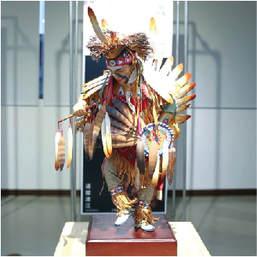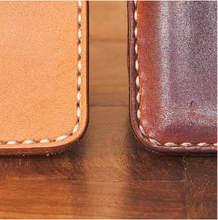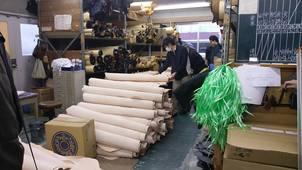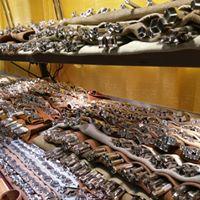
As a textile material it’s said that the origins of leather are as old as civilization itself? A lot of writers credit its origins to different points in history, but perhaps the most impressive is actually found in the Bible. The Bible credits the origins of leather all the way back to Adam and Eve. After they sinned and were removed from the Garden of Eden it’s said that God made them garments from skin and clothed them. What type of skin? It doesn’t say, but I’m guessing it might have been a lamb or something similar. So regardless of what point in history you go back to, leather has been around a long time and will probably be around until the end of civilization itself. But what has made this material so appealing throughout the ages? Perhaps this blog is not intended to completely answer that question, but feel free to add to it with your comments below…
So for now, let's talk about the pros and cons of crafting with leather. I think the best way to tackle this topic, is to simply look at the qualities of the material and it applications. In this blog I’m only going to be focusing on vegetable tanned leather, since this is what was used historically. Chrome tanned leather didn’t come along until the 1800’s.
The Pros –
-
It’s an eco-friendly and natural resource – No harmful chemicals are used in the tanning process.
-
It has a very pleasant fragrance - Natural rich earthly scent that doesn't overwhelm.

-
It is ideal for use in art or craft –
-
Images can be carved and tooled into the surface of the leather to transform this material into literal works of art
-
It can be wetted and molded into any shape or form you want. Magnificent statues and pieces of art have been molded with leather throughout the centuries, such as in the image to the right.
-
It can be stained or dyed to any color you want
-
It’s extremely durable and can last a lifetime (Special emphasis on Vegetable tanned leather)
-
It’s not that expensive… - You might be surprised to here me say that, but considering what leather is and how much you can buy for the price, it really isn’t that expensive. Since leather is a natural resource, it’s prices will fluctuate from time to time. But regardless, I still think it’s a very affordable craft material that is unmatched by any other.
-
It’s compatible – Leather is also very compatible with other textile materials, wood, and more.

-
Leather takes on beautiful properties as it ages and antiques - As leather is exposed to natural elements, such as sunlight, moisture, and oils from our hands, over time the leather will take on a beautiful natural patina tan that only adds to it beauty and look.
Cons –
-
Leather requires a little upkeep – Compared to other textiles leather actually requires much less upkeep to maintain, but in order to keep it clean it’s best to protect your leather goods with leather care products from time to time.
-
Best not to get it wet! – Leather can handle some moisture but being a natural material it’s best not to leave it in the rain if you really want it to last.

-
Shopping for leather – One of the biggest complaints people have when buying vegetable tanned leather is that it has some scaring on the leathers top surface. But this is unavoidable since the leather is a natural material. So, if the animal is raised on the free-range, then it’s going to have some scaring from bug bites, barbed wire fences, branding marks, or other animal bites. In some ways I think these marks lend character and beauty to the properties of the leather, but if you are shopping for perfection, then there are more expensive hides that can be purchased. Top quality hides are usually made from animals that are raised in protective environments where their exposure to harmful conditions are removed. These hides are of course very beautiful, but also very costly. Sometimes it’s more affordable to buy 2 hides of a cheaper leather with scars than it is to buy 1 piece of hi-quality leather. I guess it just depends on what you are making and what the job demands.

-
It’s a less known craft niche – Some may see this as a pro or a con, but I think the leathercraft industry doesn’t get the attention it deserves. Considering everything that can be done with leather and rich history of the craft I hope to see it become one of the most popular crafts the world has to offer.
So as far as I can tell the pros, far outweigh the cons... What do you think?
|

0 Comments
Recommended Comments
There are no comments to display.
Join the conversation
You are posting as a guest. If you have an account, sign in now to post with your account.
Note: Your post will require moderator approval before it will be visible.